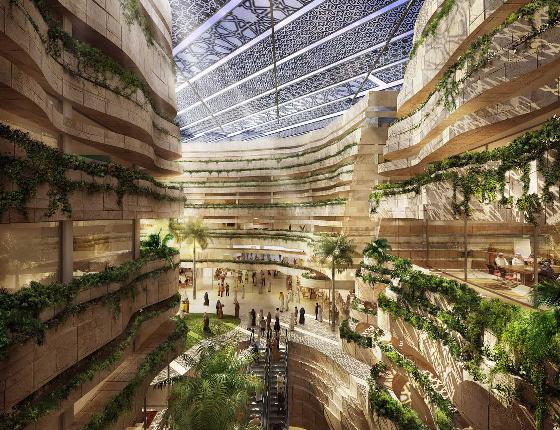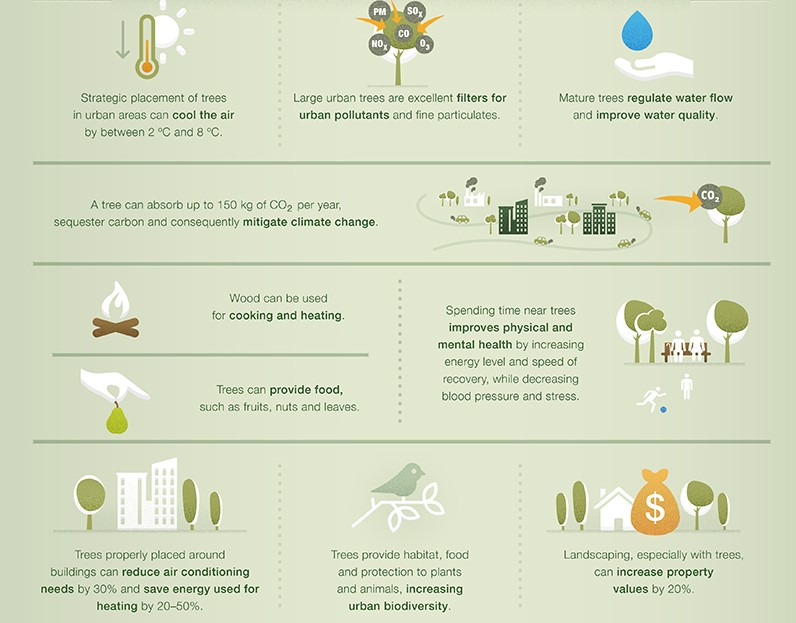By Nina Ruig
The environmental issues we’re struggling with are becoming more prone. Luckily they are also getting more visible. Circularity, urban green and sustainability have become so called buzzwords. Now that everyone is talking about it, it seems time for some action. All over the world initiatives pop up for a better, healthier planet. Ranging from nationwide bans on plastic bags to entire new cities build according to the latest views on sustainability, such as Masdar city.

More and more governments are making the environment an important point on their agendas. The Paris agreement of 2015 is a good example of an international treaty to improve the sustainability and the will to mitigate climate change of nations worldwide. This agreement was followed up by the Katowice climate change conference which resulted in a more detailed rulebook to actually achieve the agreement. However these rules are mere guidelines and none of the countries that signed can be hold accountable.
This is a problem we see on all levels. Here, in the Netherlands the government is falling apart over climate negotiations. Everyone agrees something has to be done and no one wants the responsibility for actually doing so. The same things happen in municipalities: The Hague set some ambitious goals to achieve more sustainability and circularity in the near future. To reach these goals they want to, amongst other things, implement more urban green. This ranges from planting more trees, creating more parks, to implement vertical greening, hanging gardens, green facades and rooftop gardens. These measures will contribute to the decreasing of the heat island effect and run-off, increase of biodiversity and air quality and will contribute to improved physical and mental health and aesthetics. The municipality has a multitude of plans and documents in which it describes its goals for urban greening. However they are never specified, there is no conclusive plan of action. Some ideas are in place, but the city is short of sufficient funding.

This brings us to the core of the problem. Since the municipality is a political authority, everything they work on turns in to politics. If we want more funding for urban green, it means we have to cut funding somewhere else. Who is going to pay for the urban green? Is that fair? Aren’t there other topics that need our immediate attention? All parties involved have a different take on these matters, which leads to complicated debate and a lot of compromise.
Of course it takes a lot to transition from the existing structures to new, more sustainable and greener ones. However the top down approach doesn’t seem to pay off quickly enough. Are we going to let this stop us from creating a greener living space? Do we have to wait around until the people at the top are finally agreeing? Of course not. We can all contribute in our own way. Plant some flowers next to your front door, put them in front of your window or replace some of the tiles in you garden with some green. You can go guerrilla gardening, build an insect hotel or create a shelter for small mammals, like hedgehogs. Let us make room for grassroot initiatives, while the debate goes on. If we all contribute a little bit, we can change cities to greener environments, reaping all the benefits. Mental and environmental.
For more inspiration on guerilla gardening watch this TEDTalk by Richard Reynolds.

I really like the ending! It is inspiring and it gives very good examples of what I can do myself to help “green up” the city. The ideas are small scale and overall very doable for just one person who wants to make some changes!
The rest gave a good introduction to the issue that is called politics. I like that you bring up this issue because it brings into perspective that the problems at hand need more than just a solution, they need good cooperation and leadership. Even though I would have liked a little more elaboration on the solution, I think it is a really good post!
LikeLike
I liked how you not only gave some examples of things people can do to make their surroundings greener, but that you also mentioned what problems these suggestions help solve. I can also appreciate that you don’t push politics aside and say citizens just have to do it themselves, but that those suggestions help everyone go forward while the government sorts itself out.
LikeLike
I really enjoyed reading this piece, because you started with a global scope and then zoomed in further and further which gave a nice overview of the excisting different layers and how the problem keeps repeating itself. I think it will motivate people to take action themselves, especially if you keep the actions simple enough for people to undertake. I do however, not think that everyone planting a couple flowers in their garden will have a massive impact, but instead maybe some community projects could have a more visible impact. This would still be a bottom-up initiative, and think would fit in your blog description.
LikeLike